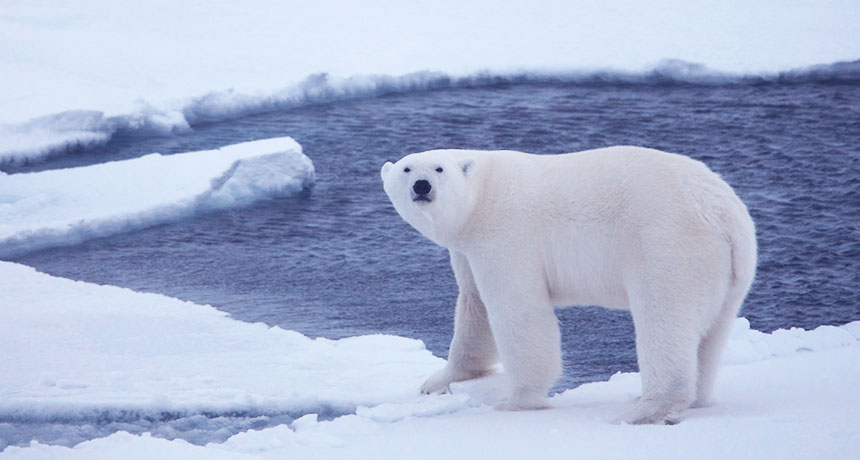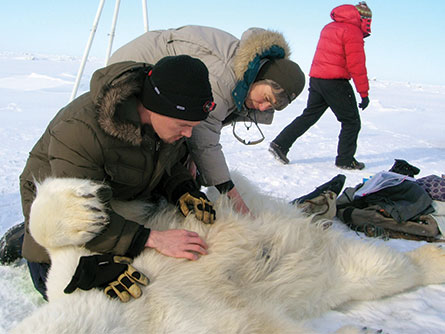Polar bears’ ‘walking hibernation’ not much of an energy saver
Summertime dips in activity and body temperature may not be enough to protect bears from challenges of climate change

BUDGETING ENERGY Polar bears, like this youngster on pack ice over the Arctic Ocean, have to learn to cope with lean times in summer. But their warm-weather energy-saving tactics may not give them much leeway as a changing climate extends hungry times.
Shawn Harper






